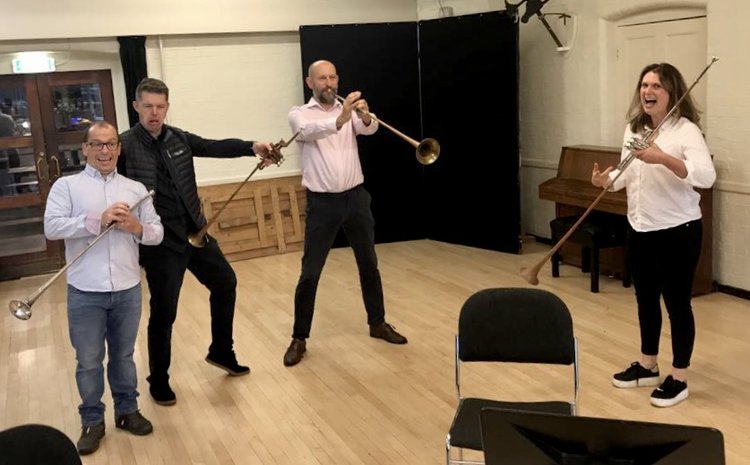Five things you need to know about playing the Fanfare Trumpet
Have you been asked to play a fanfare trumpet for the very first time or are you just curious about what one is? Our five intriguing facts will give you an insight into the brass familie’s most majestic instrument.
1. Fanfare trumpets are not as old as you think
Famously found in the tomb of King Tutankhamun’s tomb in 1324BC, the trumpet in the form of a resonating tube is justifiably called ‘ancient’, however the modern day valved fanfare trumpets favoured by todays military are much newer.
Between 1938 and 1959 London based Boosey and Hawkes made 492 three valved instruments known as Coronation Trumpets after the recent coronation of King George VI. The addition of three valves allowed players to achieve all the notes of the chromatic scale unlike the earlier instruments.
The older valveless trumpets are still played, most famously by the State Trumpeters of the Household Cavalry.

2. They can play very loud
Unlike a coiled up trumpet or cornet, the resonance on a fanfare trumpet is largely uninterrupted as the vibration travels down a long straight tube. After all, these instruments are designed to signal the arrival of very important people so they need to be heard!
A word of warning, if you are playing a fanfare trumpet for the first time it might feel quieter to you as the sound is coming out a metre away from you but trust me, that is an illusion. There is a reason this conductor is standing so far away….
3. Fanfare trumpeters get the best views
You need a head for heights in this business. Fanfare trumpeters can find themselves on cathedral balconies, castle walls or ‘in the God’s’ of a theatre. Top tips for this role include:
- Wear black socks and remove shoes so you can sneak away subtly at the end of your fanfare
- take a torch in case you get stuck in a dark corner
- use a lyre for your music, there might not be enough room for you and your trumpet let alone a music stand!
4. You need to be strong
The weight on a fanfare trumpet is spread across the length of the instrument so the pivot point feels a long way from your face. Stand with your feet firmly planted hip distance apart. Find a good grip for your hands and don’t be afraid to put the instrument down during rehearsals and stretch to release muscle tension. It takes time to get used to the feel of any new instrument. A ceremonial banner will add more weight, especially if you are standing in a windy spot!

5. Bespoke never goes out of fashion
Set in Ancient Egypt, Verdi’s grand opera Aida was all set to include a replica of the actual trumpets found in the ancient tomb of Kings Tutankhamun. It wasn’t to be, Verdi declared the sound too soft and in the wrong key. Instead he tasked instrument makers to create a longer instrument with one valve to allow him to include a full arpeggio in his composition. Today these specialist instruments are still commissioned by opera houses to recreate the grandeur Verdi envisaged.
In recent years the Ministry of Defence has commissioned brand new trumpets to be made for special events including the 2012 Olympics, Will and Kate’s and Harry and Meghan’s weddings. Each silver plated trumpet is stamped with the Royal Coat of Arms. Now that is something Bella Tromba would like to have a go on…
Plus, accessories are all the rage and a hand stitched or custom printed banner of your choosing could mark you out from the crowd whose attention you will shortly be monopolising. Happy days!
Happy fanfareing! 🎺
 Previous post
Picture This
Previous post
Picture This

